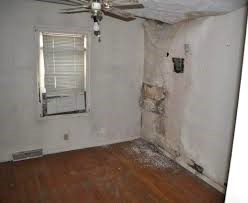
If you have lived in Florida for any amount of time, you understand our weather patterns. Summer rainy season brings hot, humid days with afternoon thunderstorms that can drop large amounts of wind-driven rain in a short amount of time. Then comes late summer/early fall with the potential for hurricanes and tropical storms, which can drop massive amounts of wind-driven rain in relatively short time periods.
Unfortunately for homeowners, the types of rain events that frequently occur in Florida are the perfect recipe for water intrusion and corresponding mold issues. Construction defects which might be relatively unextreme in less severe climates can cause huge problems for Florida homeowners. Heavy rain driven by wind can penetrate your roof, the walls of your home, and your windows, especially if the builder did not do a good job of waterproofing these parts of your home. Therefore, it makes sense to know some common signs of water intrusion in your home.
Water Stains
If water is leaking through your roof and into your attic, you will typically see water stains on your ceiling. These stains are usually brownish or yellowish with an irregular shape. These leaks can also seep behind your walls, affecting your sheetrock and the wood behind it. Water stains in sheetrock take on a similar brownish or yellowish color and irregular shape. Darker stains may indicate mold growth, a situation which, if left unchecked, can cause health problems.
Warping
When moisture invades wood, drywall, sheetrock, or your ceiling, it can cause bowing. This can commonly be seen in ceilings, which tend to sag when compromised by water intrusion. If you see warping on your walls or your ceiling, you probably have water intrusion. While warping may not appear to be much of a problem, left unchecked, it, along with the underlying water intrusion, can suddenly become a major issue.
Cracking/Staining on Exterior of Home
Cracking and staining on the exterior surface of your home is a good indication that you have water intrusion. This can represent a fairly significant issue and can cause major problems if not repaired. The water that penetrates the exterior of your home can become trapped between the exterior and interior walls. There, it settles on the wood framing and can lead to wood-rot.
Also, trapped water can become a hot-bed for mold growth. Simply put, mold requires a moisture source and a food source to grow. The trapped water is the perfect source of moisture, and unfortunately, your home itself makes the perfect source of food.






